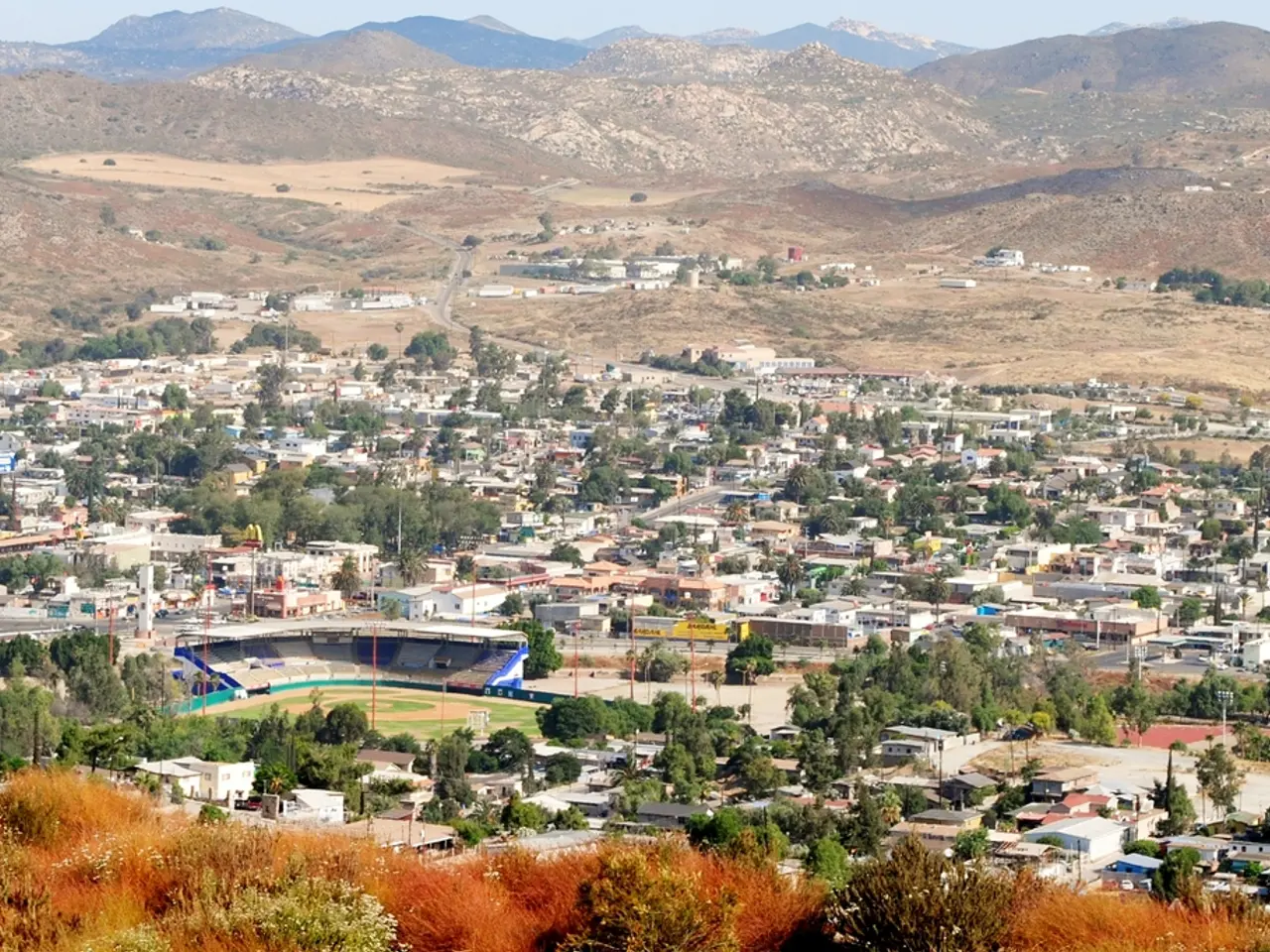Real estate sales picking up momentum in Brandenburg once more - Property transactions in Brandenburg witness another surge
The real estate market in Berlin and Brandenburg is showing signs of a cautious recovery, according to recent reports. After a period of cooling down in 2023 and a sideways price movement in 2024, purchase prices for existing apartments in Berlin have begun to show an upward trend again in early 2025.
In the heart of Berlin, the typical existing apartment now costs on average around €373,000, representing a 2.2% increase over the previous year. The price per square meter in central districts is highest, with Mitte costing €7,000 per square meter, Prenzlauer Berg €6,500 per square meter, and Friedrichshain €5,900 per square meter. Property sales volumes are concentrated in Charlottenburg, Wilmersdorf, Friedrichshain, and Neukölln.
However, the new build market in Berlin is lagging behind, affected by high construction costs and interest rates, with stagnation in new-build apartment prices since 2022.
In Brandenburg and the Berlin outskirts, including cities like Potsdam, Oranienburg, and Cottbus, median apartment prices stand at approximately €5,238 per square meter, with house prices around €5,067 per square meter. These locations continue to attract buyers seeking well-connected but more affordable alternatives to central Berlin. The outskirts of Berlin and cities like Potsdam benefit from the ongoing trend of demand shifting towards areas within and near the S-Bahn ring, with investors looking at a combination of accessibility and relative affordability.
The real estate prices in the Berlin-Brandenburg area have more than doubled since 2003 but have experienced a price correction since mid-2022, with a 25% decrease from the peak. However, prices are still roughly 50% higher than they were in 2015, showing the long-term upward trajectory of property values in the region.
The development of land prices this year indicates a further increase, according to the chairman of the Upper Expert Committee, Wilk Mroß. On average, an undeveloped plot for a single-family house cost 212 euros per square meter statewide last year. While the prices for an owner-occupied residential plot in high-priced regions in the so-called "belt" around Berlin slightly decreased, they increased in the wider metropolitan area. In the Berlin outskirts, it cost an average of 316 euros per square meter, around 7 percent less than the previous year.
Confidence in real estate as an investment form has grown again, according to Interior State Secretary Frank Stolper. The prices for commercial land decreased, but the prices for arable and grassland increased. The price for grassland increased slightly, by 2 cents, to 83 cents per square meter. While the prices for an owner-occupied residential plot in high-priced regions in the so-called "belt" around Berlin slightly decreased, they increased in the wider metropolitan area.
Despite these trends, several structural challenges persist, including high construction costs and rising interest rates, which continue to influence market dynamics. The German economy’s moderate growth forecast adds some confidence to the real estate market, but these challenges remain significant factors.
In summary, the 2024-2025 real estate market in Berlin and Brandenburg shows signs of cautious recovery with rising purchase prices in prime locations, ongoing subdued transaction volumes, and structural challenges in the new-build sector. The Berlin outskirts and cities like Potsdam benefit from spillover demand due to their relatively better affordability and connectivity, making them attractive for both owner-occupiers and investors.
- The community policy should address the rising costs of real estate in prime locations, such as Mitte, Prenzlauer Berg, and Friedrichshain, to ensure that the city remains affordable for all inhabitants and not exclusively for investors.
- Given the ongoing growth in real estate prices, the employment policy should consider incentives for investing in the construction sector to reduce high construction costs and stimulate new-build apartment development within the Berlin region.




